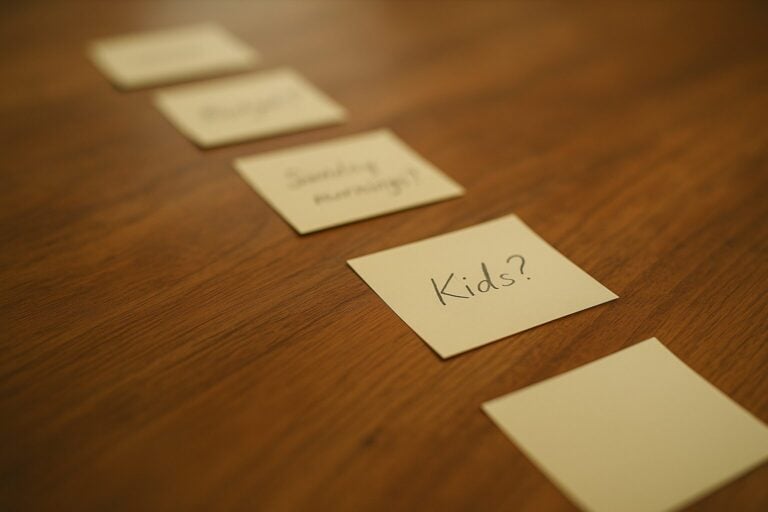Today, we’re diving into the fascinating world of blended families, spotlighting stepmothers. We’re about to challenge some long-held myths and explore eye-opening research.
The Stepmother Stereotype: Time for a Reality Check
Let’s face it: stepmothers have gotten a bad rap. From fairytales to modern media, they’re often painted as the villains of the family story. But real life is far more nuanced. Recent research by Slotter et al. (2024) is turning these stereotypes on their head.
Role Clarity: The Secret Ingredient?
The study found that stepmothers who understood their role clearly reported better outcomes across the board. This included higher self-concept clarity, improved personal well-being, and even better relationships with their stepchildren (Slotter et al., 2024). Who knew role clarity could pack such a punch?
But wait, there’s more! This clarity isn’t just good for stepmothers – it’s a win for the whole family. The research showed that when stepmothers felt clear about their role, it positively impacted their co-parenting relationship and overall romantic satisfaction.
Debunking the Myths
Let’s play a quick game of “Myth Busters: Stepmother Edition:”
- Myth: Stepmothers should instantly love their stepchildren. Reality: Building relationships takes time. It’s okay for bonds to develop gradually.
- Myth: Stepmothers who are also biological mothers have it easier. Reality: Not necessarily! The study found mixed results on this front.
- Myth: There’s a one-size-fits-all approach to stepmothering. Reality: Every family is unique. What works for one might not work for another.
The Ripple Effect of Role Ambiguity
Here’s where things get a bit complex. The study found that role ambiguity in stepmothers was linked to lower overall relationship quality with their partners. But here’s the twist – this link was mediated by co-parenting relationship quality (Slotter et al., 2024).
In plain English? When stepmothers aren’t sure of their role, it can create bumps in the co-parenting road, which then affects the romantic relationship. It’s like a family domino effect!
Bethanne and Mark: A Tale of Transformation
Bethanne and Mark came to me struggling with their blended family dynamics. Bethanne, stepmom to Mark’s two teenagers, felt like she was walking on eggshells.
“I don’t know where I fit,” she confided during our first session. Mark, meanwhile, was frustrated by the constant tension at home.
We started by exploring Bethanne’s role. Through open discussions, we discovered that everyone had different expectations. The kids saw Bethanne as a friend, Mark expected her to be a co-disciplinarian, and Bethanne was trying to be a second mom.
Here’s what we did:
- Defined Bethanne’s role clearly: She would be a supportive adult figure, not a replacement mom. If someone had to meter out discipline, that’s where Mark stepped in.
- Established boundaries: We outlined specific responsibilities for Bethanne in the family.
- Improved communication: Regular family meetings became the norm.
The result? A more harmonious household. Bethanne felt more confident, the kids were less resistant, and Mark noticed a significant improvement in his relationship with Bethanne.
“I never realized how much the role confusion was affecting all of us,” Mark admitted in our final session.
The Science Behind the Story
Now, let’s geek out for a moment. The study by Slotter et al. (2024) gives us some solid data to work with. They surveyed 152 adult women who identified as stepmothers, using online questionnaires to measure things like role clarity, self-concept clarity, and relationship quality.
The gist?
They found that stepmotherhood role clarity was positively associated with various measures of personal and relational well-being. It’s not just anecdotal – we’ve got numbers backing this up!
Embracing the Complexity
Here’s where we dive deeper. Blended families aren’t just about stepmoms, kids, and biological parents. There’s a whole ecosystem at play:
- Extended family dynamics
- Socioeconomic factors
- Cultural expectations
- Individual personality traits
- Past relationship experiences
Each of these elements adds a layer of complexity to the stepmother’s role. It’s not just about defining a role – it’s about understanding how that role fits into this intricate family tapestry.
Consider this: a stepmother’s role might evolve as the children age. What works for young kids might not fly with teenagers. And let’s not forget the co-parenting dynamics with the biological mother – that’s a whole other ball game.
The Road Ahead: Embracing Fluidity
Here’s a thought to consider: Maybe the key isn’t finding a fixed role but embracing role fluidity. Families are dynamic, ever-changing entities. Perhaps the most successful stepmothers are those who can adapt their roles as needed.
This idea of role fluidity opens up new avenues for research and therapy. How can we help blended families develop the flexibility to navigate changing dynamics? It’s an exciting frontier in family psychology.
Wrapping It Up: The Power of Understanding
So, what’s the takeaway here? Understanding and clarifying the stepmother’s role can be a game-changer for blended families. It’s not about fitting into a predefined box, but about finding what works for your unique family situation.
Remember Bethanne and Mark? Their story is just one example of how this understanding can transform family dynamics. By addressing role clarity, they didn’t just improve their marriage – they created a more harmonious environment for the entire family.
As we continue to study and work with blended families, let’s keep challenging those old stereotypes. Stepmothers aren’t villains or instant supermoms – they’re individuals navigating a complex role in the beautiful mess that is family life.
So, to all the stepmothers out there: Your role might be complex, but it’s incredibly important. Keep communicating, stay flexible, and remember—there’s no one right way to be a stepmother. Your family’s unique recipe matters most.
References:
Ganong, L., & Coleman, M. (2018). Studying stepfamilies: Four eras of family scholarship. Family Process, 57(1), 7-24.
Slotter, E. B., Audigier, A., & Markey, P. M. (2024). The benefits of being clear: Role clarity in stepmotherhood is associated with greater overall identity clarity and well-being. Self and Identity.







